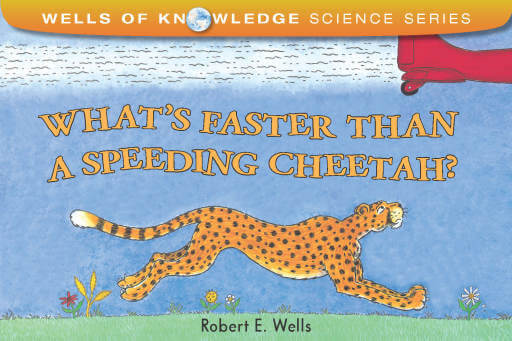
What’s faster than a speeding Cheetah?
Strand
Measurement
Australian Curriculum Year Level
Year 8, Foundation Year, Year 1
Benchmarking
Maths Concepts
Australian Curriculum: Description
This book explores the concept of speed. Different animals, objects and concepts are benchmarked against one another to develop an understanding of speed.
Teaching ideas
Used for a unit starter. Many fertile questions can be derived from this book, e.g. what's faster than a speeding cheetah? Junior secondary could use this book to explore converting abstract units MPR to km/h
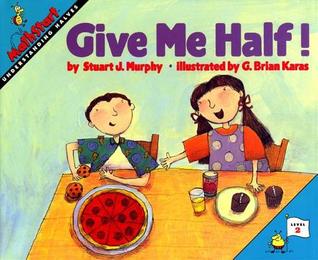
Give Me Half!
Strand
Number
Australian Curriculum Year Level
Year 2, Year 3, Foundation Year, Year 1
Part-Part-Whole
Maths Concepts
Australian Curriculum: Description
This story is about a brother and sister who are asked to share all their food and drink; pizza, cupcakes, drink etc
Teaching ideas
(1) Read the story and describe what's going on in each picture; (2) vocabulary-half, whole, share, divide, divided equally; (3) gather materials (objects, quantities and collections) and discuss how you would halve them; (4) draw pictures of objects in your classroom, and lines to show 'half'
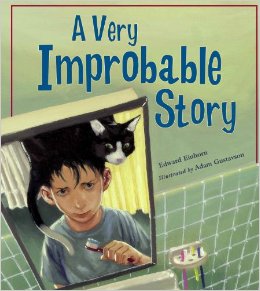
A Very Improbable Story
Strand
Statistics and Probability
Multiplication and Division Triangle
Maths Concepts
Australian Curriculum: Description
This book is a story centered around probability. Ethan goes about his morning routine while his cat friend “odds” teaches him about the probability of choosing two marbles the same colour from a large collection, two matching socks from a small collection and so on.
Teaching ideas
(1) Discuss the history of probability and the mathematicians Blaise Pascal and Pierre de Fermat; (2) "act out" the probability situations from the story to draw conclusions; (3) conduct similar experiments and record results with and without technologies
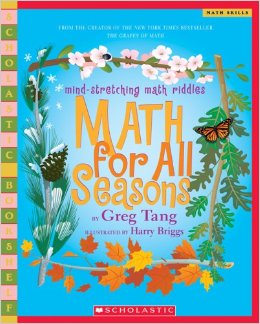
Math for All Seasons
Strand
Number
Australian Curriculum Year Level
Year 2, Year 3, Foundation Year, Year 1
Maths Concepts
Australian Curriculum: Description
This book explores counting up collections of items and objects. The book encourages seeing patterns to make the counting quicker than one-by-one.
Teaching ideas
(1) Prep students can count the objects in the collections within this book; (2) years 1-3 students can be encouraged to 'see the pattern' to help them partition to count up the objects in the quantities quicker; (3) Final pages of the book show the answers using numbers and symbols as well as circles drawn around the collection, year 2s and 3s should be encouraged to set their work out using numbers and symbols
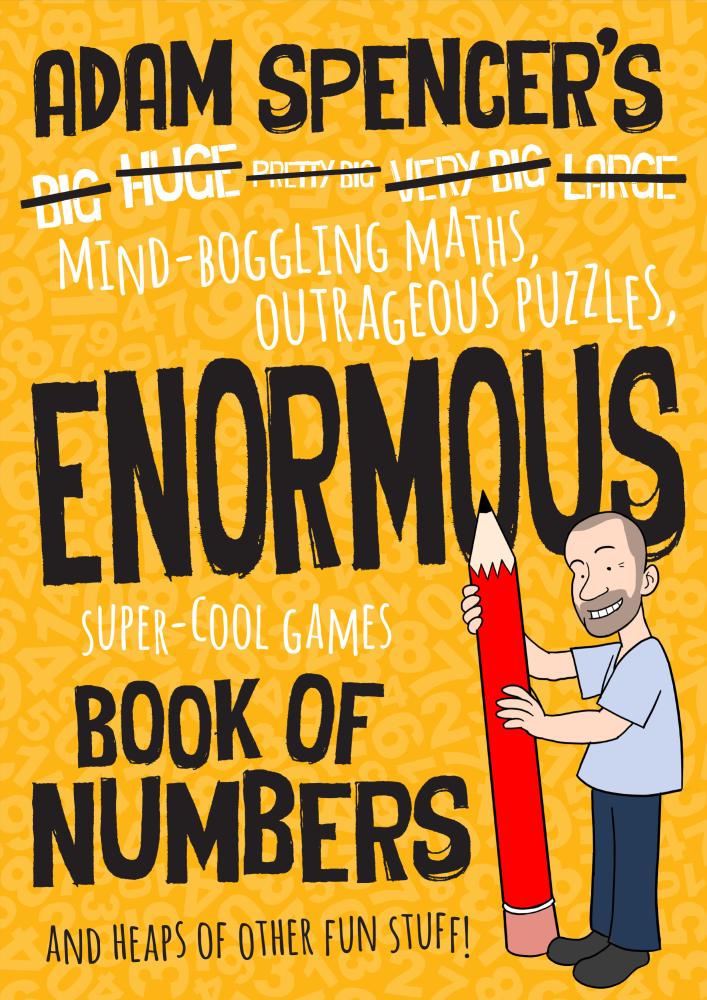
Adam Spencer’s Mind-Boggling Maths, Outrageous Puzzles, Enormous Super-Cool Games Book of Numbers and heaps of other fun stuff!
Strand
Algebra
Australian Curriculum Year Level
Year 5, Year 6, Year 7, Year 2, Year 3, Year 8, Year 4, Foundation Year, Year 1, Year 9
Multiplication and Division Triangle, Part-Part-Whole, Benchmarking, Find the Pattern, Draw what you can't see
Australian Curriculum: Description
Prep-Sort, describe and name familiar two-dimensional shapes and three-dimensional objects in the environment (ACMMG009); YR1-Recognise and classify familiar two-dimensional shapes and three-dimensional objects using obvious features (ACMMG022); YR2-Describe the features of three-dimensional objects (ACMMG043); YR3-Identify symmetry in the environment (ACMMG066); YR4-Investigate number sequences involving multiples of 3, 4, 6, 7, 8, and 9 (ACMNA074); YR5-Use efficient mental and written strategies and apply appropriate digital technologies to solve problems (ACMNA291); YR6-Construct simple prisms and pyramids (ACMMG140); YR7-Draw different views of prisms and solids formed from combinations of prisms (ACMMG161); YR8-Solve a range of problems involving rates and ratios, with and without digital technologies (ACMNA188); YR9-Express numbers in scientific notation (ACMNA210)
Teaching ideas
Real-world application in this book. Cross-curricular links are strong too, science, humanities, music, HPE etc
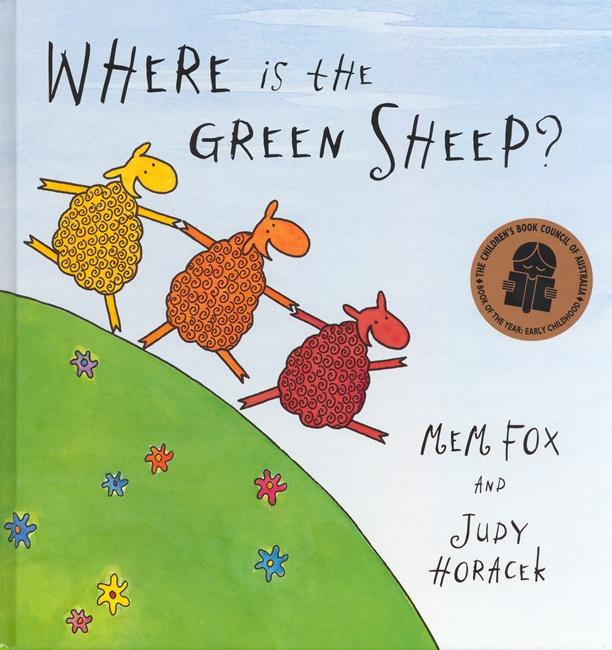
Where is the Green Sheep?
Strand
Algebra
Australian Curriculum Year Level
Foundation Year, Year 1
Act it Out
Australian Curriculum: Description
Sort and classify familiar objects and explain the basis for these classifications. Copy, continue and create patterns with objects and drawings (ACMNA005); 1-Investigate and describe number patterns formed by skip-counting and patterns with objects (ACMNA018)
Teaching ideas
Subitising small numbers, patterns
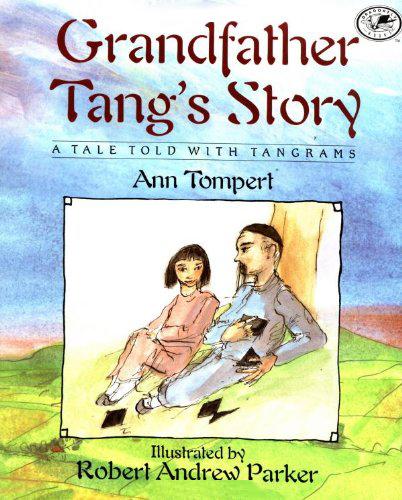
Grandfather Tang’s Story: A tale told with tangrams
Strand
Space
Australian Curriculum: Description
ACMMG009; ACMMG010; ACMMG022; ACMMG042; ACMMG064; ACMMG088; ACMMG089; ACMMG091; ACMMG112; ACMMG113; ACMMG141; ACMMG142; ACMMG165; ACMMG166
Teaching ideas
Constructing tangrams, barrier games, jigsaws, tangram teasers, exploring triangles, oblongs, parallelograms, trapeziums, areas, polygons, hexagons, angles

Mirror
Strand
Algebra
Australian Curriculum Year Level
Foundation Year, Year 1
Act it Out
Australian Curriculum: Description
Sort and classify familiar objects and explain the basis for these classifications. Copy, continue and create patterns with objects and drawings (ACMNA005); Investigate and describe number patterns formed by skip-counting and patterns with objects (ACMNA018)
Teaching ideas
Other activities that involve recognising patterns of objects.
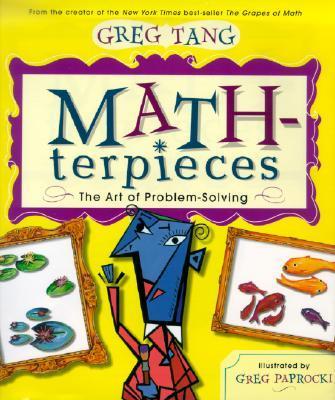
Matherpieces: The Art of Problem-Solving
Strand
Number
Australian Curriculum Year Level
Year 2, Year 3, Foundation Year, Year 1
Maths Concepts
Australian Curriculum: Description
Subitise small collections of objects (ACMNA003); Represent and solve simple addition and subtraction problems using a range of strategies including counting on, partitioning and rearranging parts (ACMNA015); Describe, continue, and create number patterns resulting from performing addition or subtraction
Teaching ideas
Students investigate other situations involing subitising and counting on with and without distractors in routine and non-routine situations. Students could write the number sentences represented by art in this book (representational to abstract).

Inchworm and a Half
Strand
Measurement
Australian Curriculum Year Level
Foundation Year, Year 1
Benchmarking
Maths Concepts
Australian Curriculum: Description
Use direct and indirect comparisons to decide which is longer, heavier or holds more, and explain reasoning in everyday language (ACMMG006); Measure and compare the lengths and capacities of pairs of objects using uniform informal units (ACMMG019)
